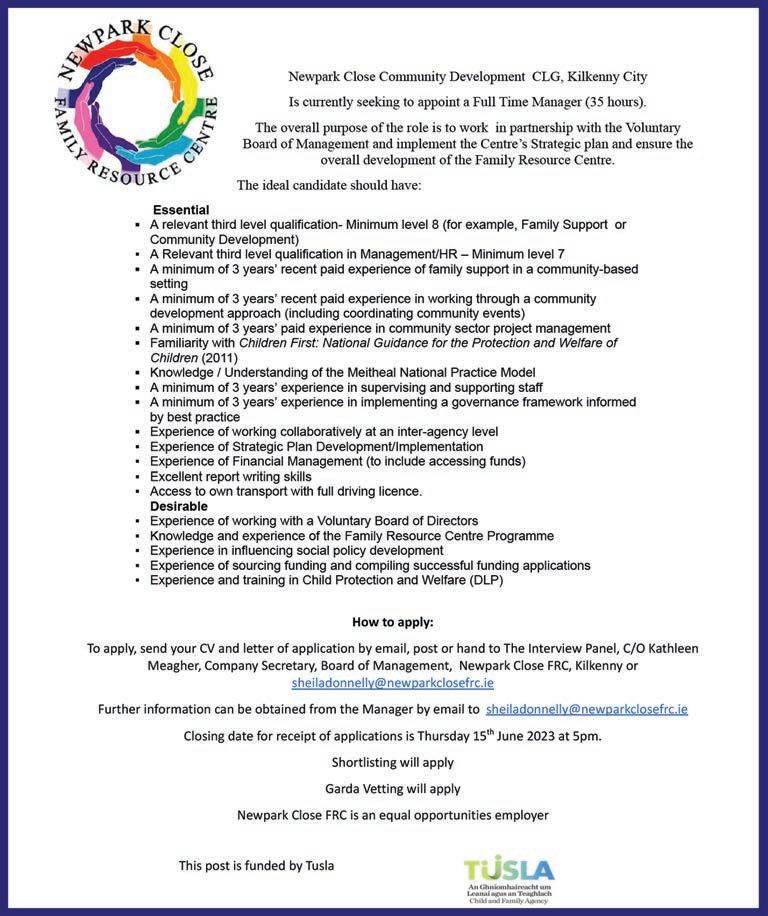
3 minute read
Factors influencing healthy ageing
And “sure I am only as old as the “Blankety Blank” I feel”
mentia. As people age, they are more likely to experience several conditions at the same time. Older age is also characterized by the emergence of several complex health states commonly called geriatric syndromes. ey are often the consequence of multiple underlying factors and include frailty, urinary incontinence, falls, delirium and pressure ulcers.
Advertisement
capacity, the implications for older people and for society are more negative.
A longer life brings with it, opportunities, not only for older people and their families, but also for societies as a whole. Additional years provide the chance to pursue new activities such as further education, a new career or a long-neglected passion. Older people also contribute in many ways to their families and communities. Yet the extent of these opportunities and contributions depends heavily on one factor: health.
Now there are common health conditions associated with ageing, common conditions in older age include hearing loss, cataracts and refractive errors, back and neck pain and osteoarthritis, chronic obstructive pulmonary disease, diabetes, depression and de-
Evidence suggests that the proportion of life in good health has remained broadly constant, implying that the additional years are in poor health. If people can experience these extra years of life in good health and if they live in a supportive environment, their ability to do the things they value will be little di erent from that of a younger person. If these added years are dominated by declines in physical and mental
Although some of the variations in older people’s health are genetic, most is due to people’s physical and social environments – including their homes, neighbourhoods, and communities, as well as their personal characteristics – such as their sex, ethnicity, or socioeconomic status. e environments that people live in as children – or even as developing fetuses – combined with their personal characteristics, have long-term e ects on how they age.
Physical and social environments can a ect health directly or through barriers or incen- tives that a ect opportunities, decisions and health behaviour. Maintaining healthy behaviours throughout life, particularly eating a balanced diet, engaging in regular physical activity and refraining from tobacco use, all contribute to reducing the risk of non-communicable diseases, improving physical and mental capacity and delaying care dependency. Supportive physical and social environments also enable people to do what is important to them, despite losses in capacity. e availability of safe and accessible public buildings and transport, and places that are easy to walk around, are examples of supportive environments. In developing a public-health response to ageing, it is important not just to consider individual and environmental approaches that ameliorate the losses associated with older age, but also those that may reinforce recovery, adaptation and psychosocial growth.


Challenges in responding to population ageing ere is no typical older person. Some 80-year-olds have physical and mental capacities similar to many 30-year-olds. Other people experience signi cant declines in capacities at much younger ages. A comprehensive public health response must address this wide range of older people’s experiences and needs. e diversity seen in older age is not random. A large part arises from people’s physical and social environments and the impact of these environments on their opportunities and health behaviour. e relationship we have with our environments is skewed by personal characteristics such as the family we were born into, our sex and our ethnicity, leading to inequalities in health.
Older people are often assumed to be frail or dependent and a burden to society. Public health professionals, and society as a whole, need to address these and other ageist attitudes, which can lead to discrimination, a ect the way policies are developed and the opportunities older people have to experience healthy aging.
Globalization, technological developments (e.g., in transport and communication), urbanization, migration and changing gender norms are in uencing the lives of older people in direct and indirect ways. A public health response must take stock of these current and projected trends and frame policies accordingly. While all this information is very important for us to know and think about. We also must remember. Age is just a number on a piece of paper, It is a state of Mind and as some of the more cheeky seniors say “sure I am only as old as the “Blankety Blank” I feel Answers to Studio TEN , Twilight Community Group 15A International Cultural House Hebron Business park Kilkenny.










